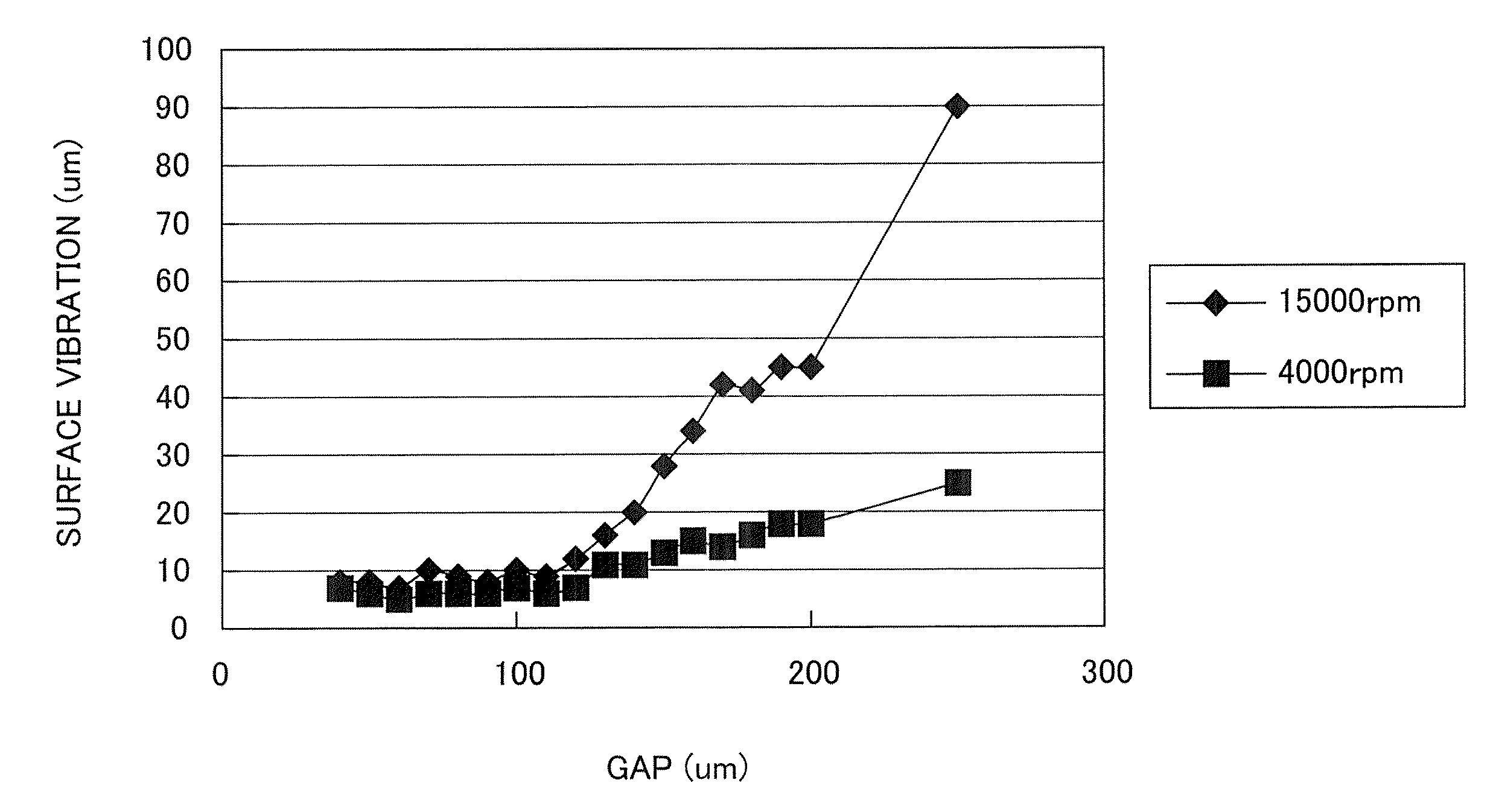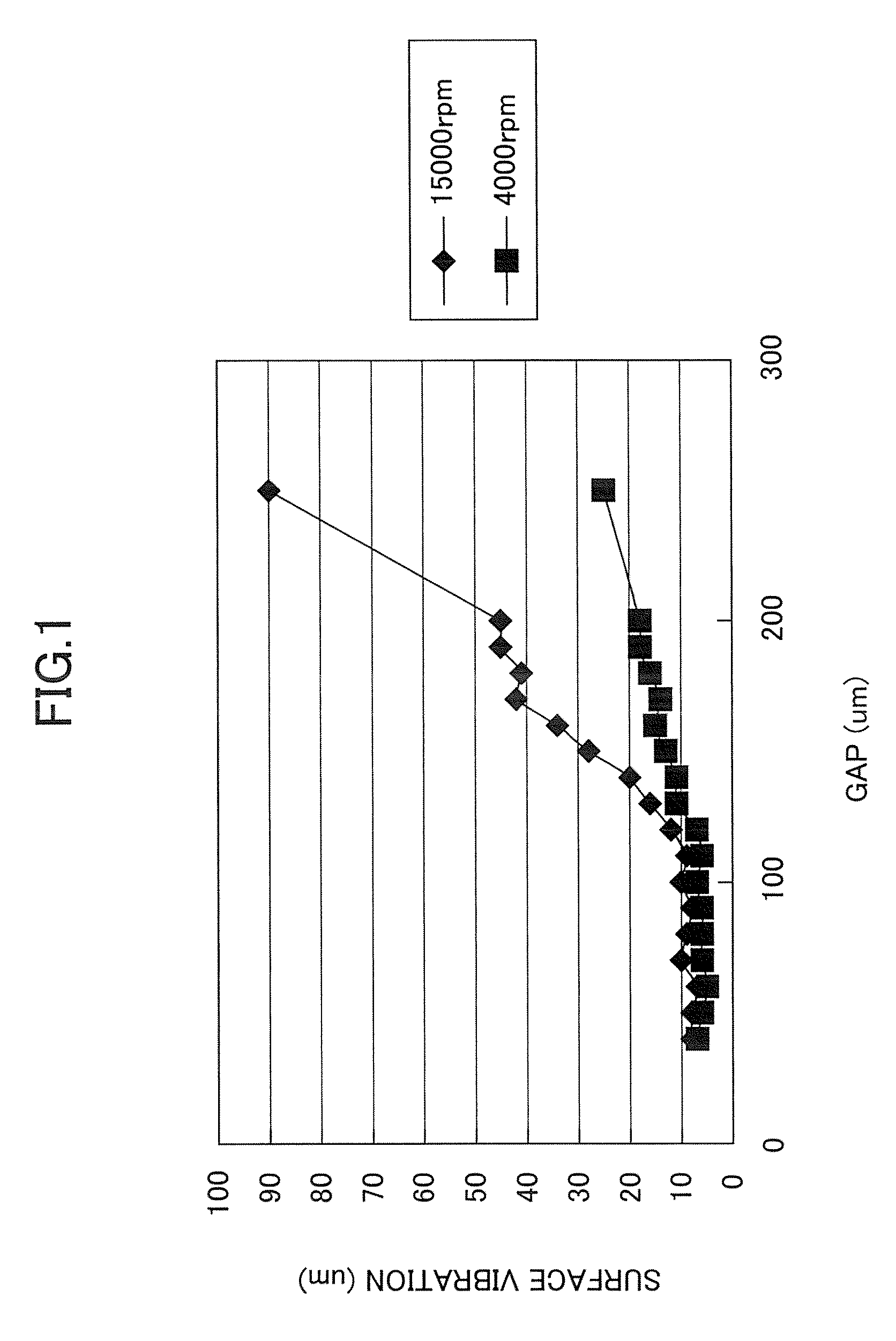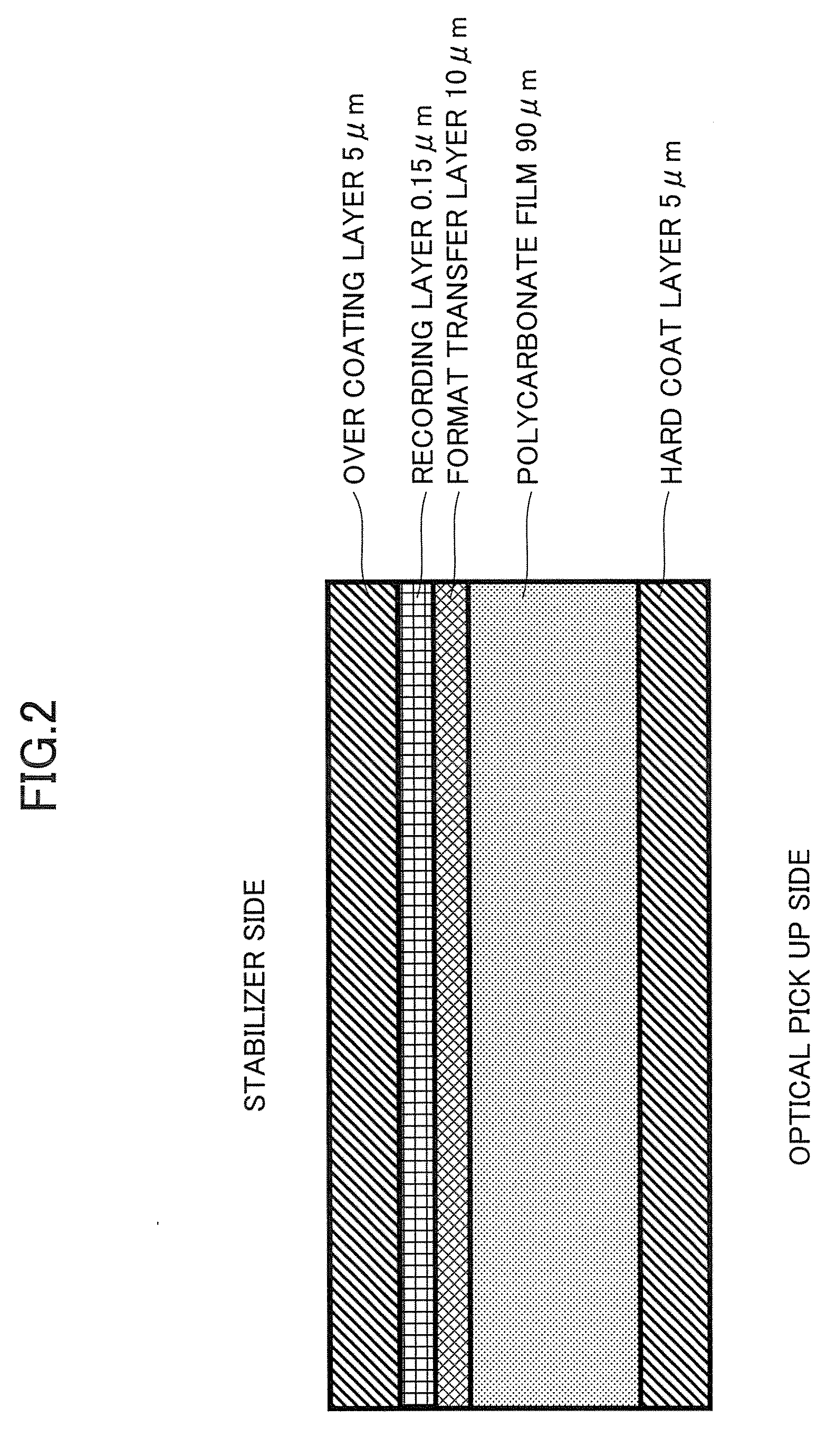Recording/reproducing apparatus and recording/reproducing method
- Summary
- Abstract
- Description
- Claims
- Application Information
AI Technical Summary
Benefits of technology
Problems solved by technology
Method used
Image
Examples
first embodiment
[0038]Before describing a first embodiment, the experiments and comments on the experiments are described.
[0039]FIG. 1 shows a relationship between a gap (a distance between the disk and the stabilization member) and the amount of the surface vibration (hereinafter may be simplified as “surface vibration”) when a recording disk shown in FIG. 2 is used. FIG. 2 shows a configuration of the recording disk. The recording disk has a diameter 120 mm and a thickness about 110 μm and made of polycarbonate. As shown in FIG. 2, from a side facing an optical pickup to a side facing a stabilization member (stabilizer), the recording disks includes a hard coat layer (5 μm in thickness), a polycarbonate film (90 μm), a format transfer layer (10 μm), a recording layer (0.15 μm), and an over coating layer (5 μm).
[0040]Referring back to FIG. 1, FIG. 1 shows the changes of the amounts of surface vibration when the disk in FIG. 2 rotates at 15,000 rpm and 4,000 rpm, respectively. As shown in FIG. 1, w...
second embodiment
[0080]In the following, a recording / reproducing apparatus according to a second embodiment of the present invention is described. In this second embodiment, the optimum gap is determined based on the change of the rotational speed of the recording disk 500.
[0081]First, a relationship between the gap and the rotational speed is described with reference to FIG. 10. FIG. 10 shows the relationship between the gap and the rotational speed when the gap is set to 100 μm and a current or a voltage is set so that the recording disk 500 shown in FIG. 2 rotates at 10,000 rpm.
[0082]As shown in FIG. 10, when the gap becomes equal to or less than about 100 μm, the rotational speed decreases. Further, when the gap becomes less than about 40 μm, the spindle 502 stops. This stopping of the spindle 502 occurs because a deformed innermost part of the recording disk 500 starts sliding toward the stabilizer 507 due to the fact that the gap becomes too narrow.
[0083]Therefore, in this second embodiment, t...
modified embodiment
[0095]Next, a modified second embodiment of the present invention is described. This modified second embodiment is different from the second embodiment in that the optimum gap is determined not based on the change (difference) between before and after rotational speeds but based on a difference from a reference rotational speed.
[0096]FIG. 13 is a flowchart showing a process of determining the optimum gap according to the modified second embodiment of the present invention. In FIG. 13, the same numerals are used to designate the same or similar processes in FIGS. 7 and 12, and the descriptions thereof are omitted.
[0097]In step S1301, the calculation means 1102 determines whether the acquired (detected) rotational speed is equal to or less than a predetermined number. Herein, the predetermined number refers to a rotational speed which is less than a reference rotational speed by some percentage. In the example of FIG. 10, the reference rotational speed is set to the initial rotational...
PUM
 Login to View More
Login to View More Abstract
Description
Claims
Application Information
 Login to View More
Login to View More - Generate Ideas
- Intellectual Property
- Life Sciences
- Materials
- Tech Scout
- Unparalleled Data Quality
- Higher Quality Content
- 60% Fewer Hallucinations
Browse by: Latest US Patents, China's latest patents, Technical Efficacy Thesaurus, Application Domain, Technology Topic, Popular Technical Reports.
© 2025 PatSnap. All rights reserved.Legal|Privacy policy|Modern Slavery Act Transparency Statement|Sitemap|About US| Contact US: help@patsnap.com



